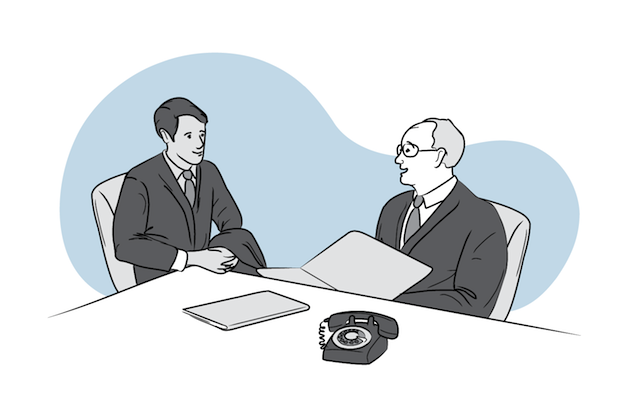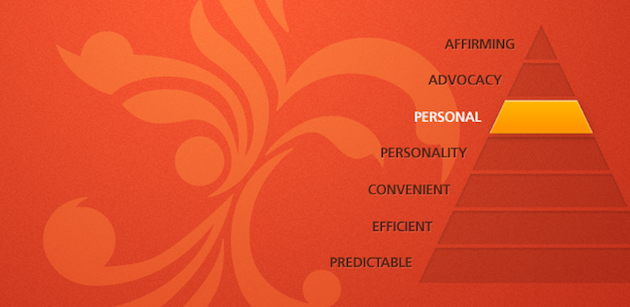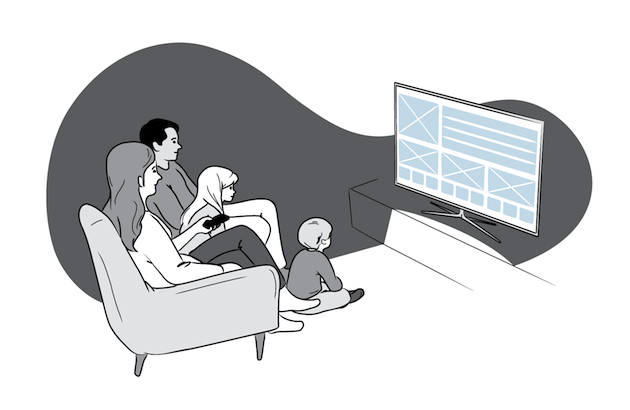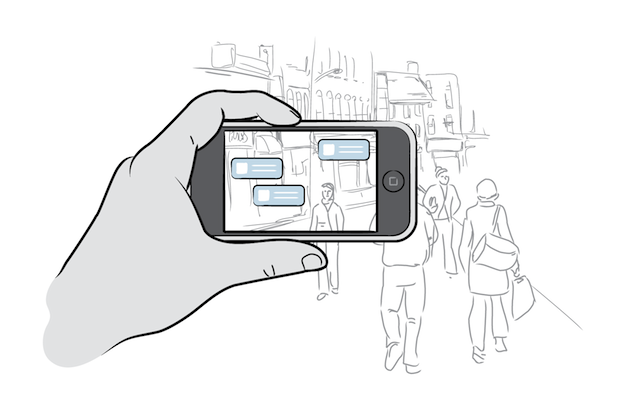Imagine a simpler time, like the 1950’s. A small business owner named John wants to expand his store. He visits his local bank to meet with the bank manager, Mr. Wilson, to discuss a loan. They already know one another as Mr. Wilson oversees John’s family’s finances. Mr. Wilson can’t approve John’s loan, as his business is still finding its feet, but he helps John plan what he needs to do to qualify, and meets with him monthly to discuss his progress. Six months later John gets his loan, with a discounted interest rate for the first year.
Fast forward to the early 21st century and things have changed. To apply for a loan at his local branch, John calls the bank’s centralized customer service number to make appointment, navigates multiple menus, and speaks to a call centre operator on another continent. John finally meets a freelance Business Banker with no approval power. John completes two application forms and amasses numerous documents that are assessed by a Credit Manager in the head office. Using standard credit scoring criteria John doesn’t get his loan, or any feedback about why it wasn’t approved.
Looking at these examples side-by-side, it’s easy to get nostalgic for the good old days, but few of us would actually turn back the clock. We want the ease of 24/7 self-service, though we still crave personal experiences. The challenge for any business is how to balance Predictability, Efficiency, and Convenience—the first three essentials of Different’s pyramid of “Essentials of Customer Experience”—with personalized service. In our previous article, “Personality, the fourth essential of customer-centric business,” we discussed the importance of first creating an emotional relationship with customers. In this article we will discuss further how to build to a strong interpersonal relationship by recognizing your customers as individuals.
Why create a ‘personal’ experience?
Rapidly evolving technology has given customers more access to greater efficiency, predictability, and convenience than ever before. Diversity and choice are minimum expectations. Yet craving a personalized experience is not just nostalgia. Customers already know what businesses often overlook: that a personal experience can be faster, more efficient, relevant, useful, cheaper, and more emotionally sustaining than an impersonal experience.
For businesses, personal experiences translate into increased repeat business, greater share of wallet, and customer loyalty. Ultimately, highly personal experiences and products drive sales. This is especially true for any business with offerings that have been commoditized.
As an example, for the past five years, a close friend has been a loyal customer of a small local gift shop. Location was the main motivator at first but she has since moved and still regularly returns because of the service. The staff knows her name. They know what she likes, help her find it and then gift-wrap it with care. The prices are cheaper elsewhere and there are shops closer to home but she returns to her little gift shop because it feels like she is buying from a friend, not a company.
What is a ‘personal’ experience?
The secret to providing a personal experience lies in John’s interaction with Mr. Wilson:
- John was recognized by the bank manager.
- Mr. Wilson addressed John’s needs one-on-one, not via mass communication or through multiple staff members.
- Mr. Wilson delivered a customized service, tailoring his offering to John’s needs.
- The conversation was personalized and focused on John’s business.
- The culture of Mr. Wilsons bank enabled him to be agile and flexible to meet John’s needs.
Ironically, infinite online choice is making the desire for a personal experience a very ‘now’ issue. Organizations are responding by offering creative solutions that extend the concept of a personal experience past anything John could have imagined.
How to achieve a personal experience
Recognize the customer
The most fundamental element of a personal experience is recognition. Knowing your customer and greeting them by name acknowledges their importance to your business. Knowing your customer’s history with your company, and using it sympathetically, ensures your customers feel recognized and valued. By mirroring ‘real’ social interactions, you create interpersonal bonds that are harder to break than commercial bonds.
Knowing your customer builds loyalty, but also reduces time and effort wasted on introductions and repeat explanations, making ongoing transactions faster. The ethnographic user research conducted at Different, the Australian based customer-centered-design consultancy we work for, supports this idea: We found that staff specialization within customer service in a major Australian bank resulted in numerous repeat handovers, authentications, and explanations leaving customers frustrated. Inevitably, at the first opportunity, they took their business elsewhere. Conversely, when your customers feel known, they stay put. One of Different’s studies of rural Australian farmers showed a strong preference for dealing with local suppliers who knew them, despite access to cheaper prices elsewhere. The ease of picking up the phone, knowing that introductions wouldn’t be necessary, ensured they remained loyal customers.
Create a One-on-One connection
Recognition forms the preliminary basis for offering your customer a personal experience. Once a company is talking to an individual, rather than to masses, it can start establishing a connection. As in social relationships, people need to feel heard and understood, which in-turn fosters greater intimacy. As the psychologist Carl Rogers said: “Listening is difficult work that we will not undertake unless we have deep respect and care for the other.” Active listening is an effective communication skill to aid mutual understanding. The listener focuses all their attention on listening to the verbal and non-verbal cues without interrupting, judging, or arguing. By becoming better listeners, staff can better understand an individual customer’s meaning and better service their individual needs.
Creating a connection is particularly important in the handling of customer complaints. Businesses with a human connection tend to have a strong brand personality, but not always. Financial companies, often notorious for being faceless, can offer a human connection by listening to their customers and letting them know they have been heard. In 2011, the National Australia Bank averted a media disaster after widespread ATM outages by using individual responses. When news of the faults spread like wildfire through social networks, the bank quickly sent personal, individual replies to posts. A customer later described this one-to-one connection as “unusually personal and responsive for a bank” and noted it left her feeling “much more forgiving than I normally would towards something as corporate and faceless as a bank”.
Allow for customization
Equipped with a good understanding of your customer, you require flexibility to customize or personalize your systems and processes and achieve a more personal experience. Customization and personalization, while similar, are not the same things and each offers different opportunities to exceed customer expectations. Customization requires active participation from customers, as the user must select from options to customize a service. However, for customization to be effective, the customer must feel that the effort required to customize is worth the resulting reward.
Many companies are focused on creating customized products or services to fulfill the customer’s need for an individual experience. Canadian brand Red Moon allows customers to design their pet food to match their animal’s activity level and add supplements to fulfill individual nutritional needs. The Mission Bicycle Company in California offers customers the opportunity to design almost every element of their bike to meet individual needs and aesthetics. The motivation to create a unique bike or nutritionally appropriate pet food is strong enough to drive customers to outlay the effort of customization. By co-designing with their customers they also generate a sense of ownership in the process. That makes the customers feel valued which leads them to value the company.
Personalize the experience
Personalization is more passive than customization, as it requires no user selection. The business anticipates their users needs and automatically delivers that content. Websites like Amazon and Google Finance are known for successfully personalizing their offering based on customers previous transactions—listing items previously viewed and offering similar items. At Different, we have used personalization to improve the process of servicing mortgage inquiries for an Australian bank by training customer service staff to personalize their responses based on each customers context and anticipation of their needs, rather than using a product script.
Technology, once seen as highly impersonal, is now facilitating highly personalized experiences. Collecting and using customer data appropriately underpins this process. Apple, Google, and Amazon are all effective at mining and integrating data across an individual’s product or interaction history. As sales of smartphones outstrip PCs, our interactions are increasingly online, geo-tagged, captured and fed back to app creators. This has created what global design firm frog describes as “a pervasive mist of data … that will drive future products, services, and technology.” Smart TV’s are an example, having moved beyond just on-demand content to highly personalized content “discovery” based on the viewing habits and tastes of an entire family and their social networks.
Using personal data to offer personalized advice is changing the way we engage with technology. Siri, Apple’s virtual assistant supports your decision-making based on a deep and expanding knowledge of you. Siri not only recognizes what you say, but what you mean, making suggestions for your future actions The explosion of health and wellness apps, such as Skin Scan also reflects this process. This app scans your moles, shows their risk of being cancerous, stores the results so you can monitor your moles over time, and recommends check ups when necessary. Unlike generic ‘cyber-diagnosis’, the app responds to your individual skin over time, reinforcing the personal nature of the experience. Localizing an experience via augmented reality can also personalize that experience. Apps can answer questions from “Where can I work quietly?” (worksnug) to “What deals or coupons can I use in this neighborhood?” (Notikum). These apps enhance customers’ real time, contextual experience.
Maintain a culture that supports agile and flexible staff
As touched on in the personality article, we know that staff can only deliver a truly personal experience if they are enabled to act with agility and flexibility. Zappos’ Customer Loyalty Team has no scripts or call-time metrics, and its members are encouraged to listen to the customer. Their only rule: take as long as needed to understand and satisfy a customer. Even if the customer is just lonely and calling to chat, keep talking, ask questions, and be a good listener.
You may wonder how Zappos staff know what constitutes good customer service without rules or scripts. At Zappos, the entire company culture supports and guides their actions. The way the company is managed—the way the executives and leaders treat their staff—affects how staff treat their customers. Zappos CEO Tony Hsieh explains: “Our number one priority as a company is our company culture. Our whole belief is if we get the culture right, then most of the other stuff, like building a long-term brand or delivering great customer service, will just naturally happen on its own.”
Zappos believes that their culture generates long-term customers and revenue. As Hsieh notes: “The payoff is not in the current quarter or the current year. The payoff is probably going to be two or three years down the line.”
The risks of being too personal
According to the Internet Retailer’s Top 500 Guide, over half the largest online retailers used some personalization techniques last year, making the risks of personalization an important issue to weigh. Companies are turning to specialist companies to analyze their customer data and create bespoke experiences for their customers. Creating a personal experience develops interpersonal bonds and for that reason it should follow social norms or it runs the risk of backfiring and alienating customers.
Do not pigeon-hole people
While he was Executive of Director of Marketing at Urban Outfitters, Dmitri Siegel saw an opportunity to personalize the website and speed up purchasing with gender-based heuristics. Unfortunately, the customers disagreed and took offense at being targeted by gender, especially as women often bought men’s items. “We saw customer frustration at being targeted outweigh any benefit … If you got it wrong once, it outweighed getting it right 10 times.”
Do not stalk
While customers like to be recognized they don’t want to feel stalked. Inappropriate use of personal data was illustrated when an angry father stormed Target to complain that his teenage daughter was sent baby-related marketing from the company. Target had analyzed his daughter’s spending behavior and worked out a pregnancy prediction score and estimated delivery date. While he later found out she was pregnant, Target quickly discovered it “creeped people out”. Clearly, personalization should not undermine your customer’s privacy.
Run the “acquaintance test”
Getting the balance right in creating a personal experience is important. To avoid alienating customers consider running the “acquaintance test” before implementing strategies to personalize your offering. Ask yourself how much information you would share in a conversation with an acquaintance (not a friend). Would it seem normal to share the information you have at hand or would it seem unusual? If it betrays a social norm and is unusual, it is likely that it will undermine privacy, erode trust, and alienate customers.
Conclusion
The traditional view of a personal experience is that it is created by a well-trained staff or by hands-on experts. But it is clear that in the 21st century such an interaction will often depend on design and technology that recognizes customers, effectively capturing and using their personal data, combined with staff that acts autonomously to meet both customer and business needs.
What is crucial to note is that being personal is not just a “nice to have.” It can be the cornerstone your product rests on and can ensure that each customer’s interaction is useful, relevant, more efficient, and cheaper. And most importantly, from a business perspective, it can create loyal customers for your brand.
As our Zappos example earlier suggested, once staff establish a personal one-to-one connection with customers, the customers begin to feel their staff are advocating for them. This is one of the deepest experiences a customer can have with a company and will be explored in our next article, “Essential of Customer Experience: How to create a company culture of advocacy for your customers.”
Checklist for Personal Experiences For Business
Are you worried that your business isn’t personal enough? By improving your interpersonal relationship with customers you can foster greater intimacy. Start by understanding your customers’ existing pain-points. Assess one of your current processes end-to-end (digital, phone, paper or service) and spot any moments that are not personal.
- Start with the basics; do you recognize your customers? Ensure you require users to only identify themselves once during the process. Multiple logins online, referring to a customer as a number and bad telephone handovers are all examples of recognition failure leading to customer frustration and eroding of trust.
- How well do you know your customers? Capture all your customer’s interactions to enable staff to quickly know the customer, understand their history and reduce repetition. Ensure customer pain-points are captured across all mediums and quickly addressed. Any patterns emerging across the customer base can pinpoint areas for improvement.
- Be cautious when implementing new personalization. Use the right data in the right way: Adhere closely to social norms to avoid alienation. Use tools such as the “acquaintance test” before implementing any new personalization features and test and iterate to create the best solution.
- Don’t rely solely on customization to make a process more personal. Don’t overwhelm the user with choices. This can lead to choice-overload and can undermine the efficiency of a process. Lastly, ensure the effort required for user customization is well worth the reward otherwise this can lead to customer frustration or avoidance.
- Give staff the tools to be more personal. Teach staff how to practice active listening with customers to ensure mutual understanding and strengthen interpersonal bonds. Most importantly – foster a company culture supports agile and flexible staff that can accommodate your customers’ individual contexts.
Illustrations by Nam Nguyen
Ant versus mantis image provided by Shutterstock










